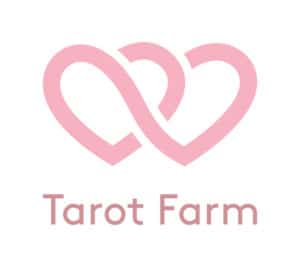Divination cards, especially those with rich interior content, can touch those parts of the soul that are in a latent state and wake them up. Each divination method provides its distinct benefits to the diviner who uses it systematically.
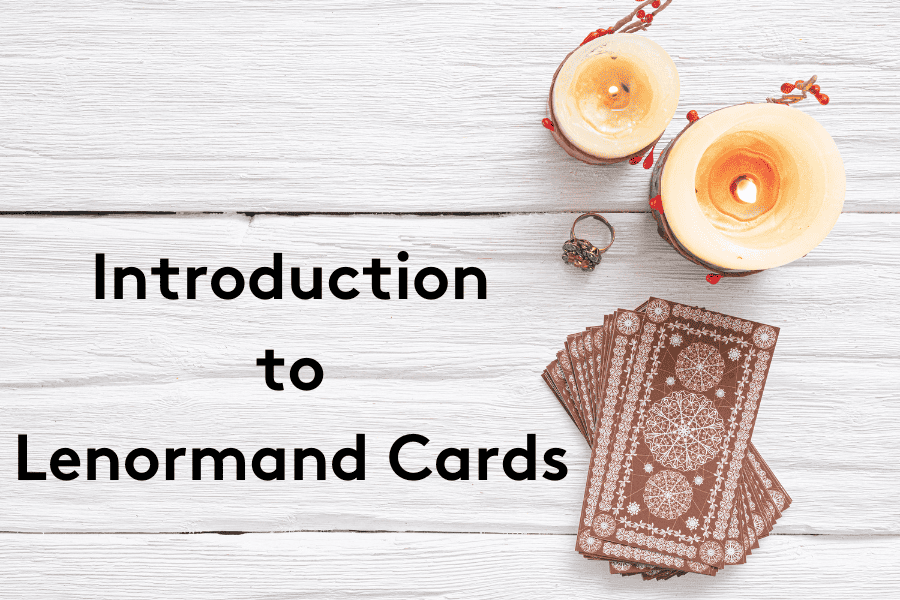
Lenormand cards combine knowledge with intuition. Card magic with them is one of the most effective and famous systems after the Tarot card system. In the following lines, you will find everything you need to know about this interesting card divination system that is called the Lenormand cards.
What Are Lenormand Cards?
The Tarot cards have a lengthy history spanning over six centuries and have always been the focal point of cartomancy. Historically used to forecast future events, Tarot has evolved into a tool for self-discovery and empowerment. The Lenormand system shares a similar history, albeit a couple of centuries younger, originating in the heart of Europe and gaining popularity globally.
This 36-card system was notably prevalent among the upper socioeconomic classes of Germany and France. Unlike the introspective focus of the Tarot, Lenormand cards feature straightforward, unambiguous images addressing more tangible, everyday concerns.
History Of Lenormand Cards
The first known Lenormand deck dates back to the late 18th century, bearing symbols akin to those found in tasseography, or coffee ground reading. The oldest surviving Lenormand deck, dated around 1799 or 1800, is housed in the British Museum in London. Initially named “The Game of Hope,” it was intended for in-house tarot-based entertainment.
With time, these cards evolved into a spiritual tool for self-reflection and self-improvement. They owe their name to Madame Marie Ann Lenormand, a famous psychic of her time. Lenormand, who passed away in the mid-19th century, created her unique divination method using these cards. Her clientele included historic figures like French revolutionaries Robespierre and Marat, Josephine Bonaparte, and Tsar Alexander I of Russia.
Post her demise, a new card system evolved based on her original methodology, incorporating her name and sparking a fresh trend in cartomancy that swept across mainland Europe. Lenormand cards gradually gained momentum, reaching the Balkans, Russia, the Netherlands, Central Europe, and Brazil. The English-speaking world, primarily immersed in Tarot, didn’t recognize Lenormand cards until the early 21st century.
How to use Lenormand Cards
Lenormand cards serve as an essential tool for an occultist, facilitating in-depth exploration of an individual’s psyche, unveiling their energy, and assisting in forging spiritual paths contributing to self-awareness and spiritual growth. The Lenormand system uses symbols whose interpretation narrates an individual’s unique journey.
Typically, the cards are read in pairs or laid out as a complete Grand Tableau, a spread involving all 36 cards. The ultimate aim is spiritual exploration, problem identification, solution finding, self-acceptance, and personal growth.
The dynamics of Lenormand cards lie in their honesty and directness, inspiring the querent to navigate life with assertiveness and determination. The method’s strength rests in the precision of its revelations and the immediacy of problem-solving.
Differences Between Lenormand And Tarot Cards
While both systems lend themselves to various interpretations, fundamental differences distinguish Lenormand from Tarot. This topic is covered more comprehensively in another article, but let’s outline some key points here.
Lenormand cards and Tarot cards are both tools used in cartomancy, or card divination, but they have a number of significant differences. Here are some of the main distinctions:
Number of Cards
Traditional Tarot decks contain 78 cards divided into the Major Arcana (22 cards) and Minor Arcana (56 cards). In contrast, a Lenormand deck contains 36 cards and no such division.
Card Imagery and Interpretation
Tarot cards are richly illustrated with symbolic imagery that allows for a wide range of interpretation, often inviting introspection and reflection. Each Tarot card can be read in multiple ways depending on its position, surrounding cards, and reader’s intuition. On the other hand, Lenormand cards are more straightforward and literal, featuring simple images like a tree, a fox, or a ship. The meaning of each Lenormand card tends to be more fixed and concrete.
Lenormand Cards Have No Reversals
Unlike Tarot, Lenormand cards are not typically read in reversal. Instead, each card’s possible interpretations – positive, negative, neutral – are inherent in the card itself. For example, certain cards carry purely positive or negative connotations.
In contrast, a Tarot card could suggest something entirely different when reversed, implying
Lenormand Cards Are Read As A Sentence
A very common method of reading Lenormand cards is to treat their meanings as words and read them in order, like a spreadsheet. On the contrary, the reading of tarot cards is done exclusively intuitively, as dictated by the respective reader. Of course, Lenormand cards can also be read this way, but it is emphasized that their meanings are much more literal compared to tarot cards.
Focus of the readings
Tarot readings often focus on internal experiences and spiritual growth, delving into the psyche to highlight emotions, thoughts, or spiritual aspects. Lenormand readings tend to be more practical, focusing on tangible events, relationships, and day-to-day matters.
Lenormand cards and their keywords
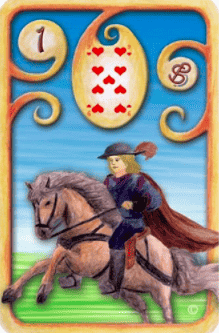
Knight: Represents movement, change and travel.
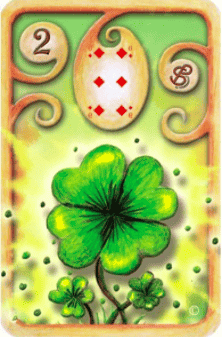
Clover: Represents luck, opportunity and success.
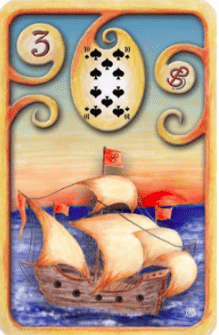
Ship: Represents travel, trade, and change.
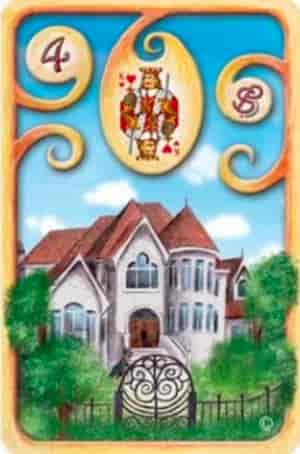
Home: Represents security, family and stability.
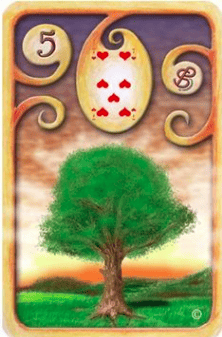
Tree: Represents health, growth and evolution.
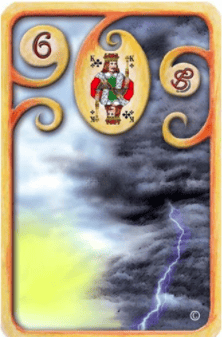
Clouds: Represents confusion, uncertainty and doubt.
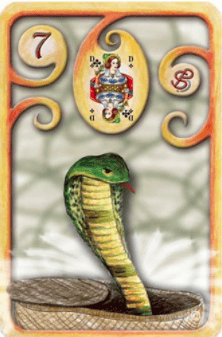
Serpent: Represents betrayal, deceit and manipulation.
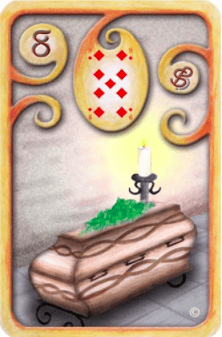
Coffin: Represents the end, termination, transformation and rebirth.
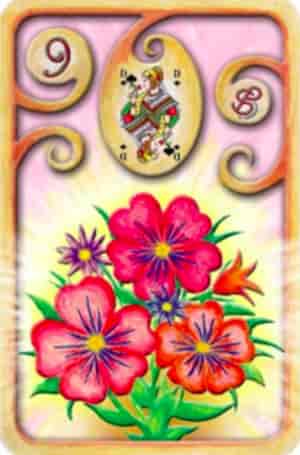
Bouquet: Represents joy, celebration and love.
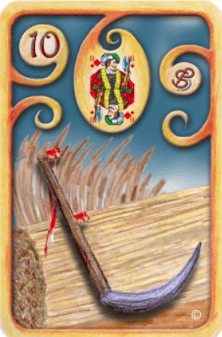
Scythe: Represents change, decision and completion.
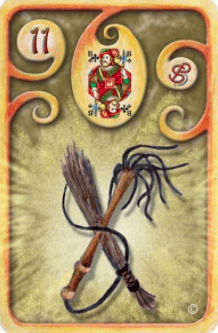
Whip: Represents conflict, struggle and challenge.
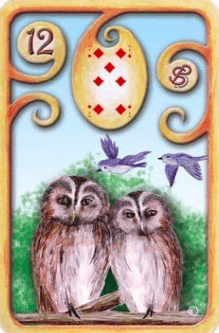
Birds: Represents conversations, dialogue and communication.
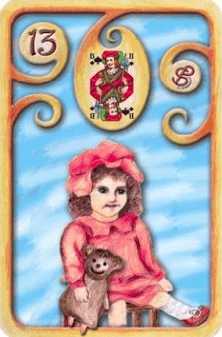
Child: Represents innocence, purity and new beginnings.
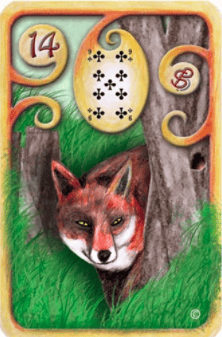
Fox: Represents cunning, intelligence and trickery.
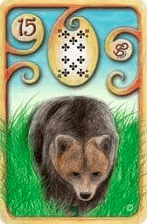
Bear: Represents strength, power and money.
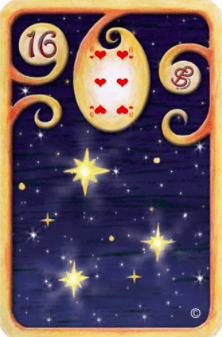
Stars: Represents hope, inspiration and enlightenment.
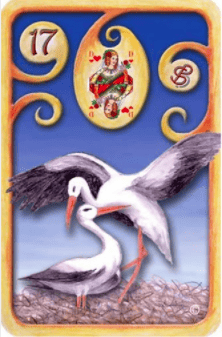
Stork: Represents significant changes and transformations.
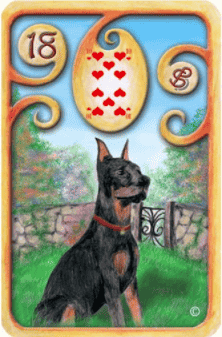
Dog: Represents friendship, loyalty and protection.
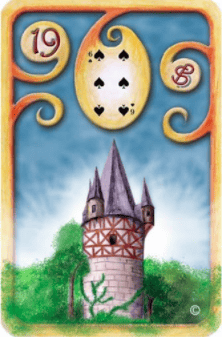
Tower: Represents isolation, solitude and structure.
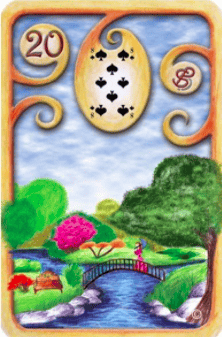
Garden: Represents socializing, partying and fun.
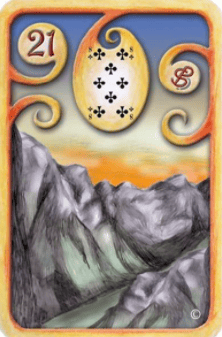
Mountain: Represents obstacles, challenges and overcoming.
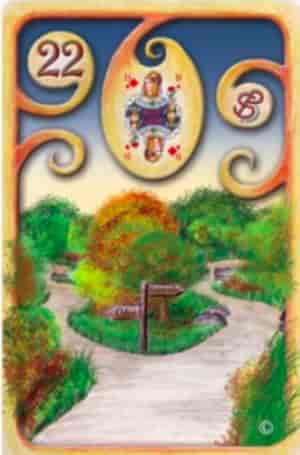
Paths: Represents choices, decisions, and options.
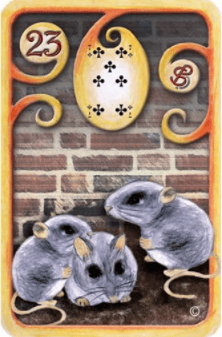
Rats: Represents loss, theft and disorder.
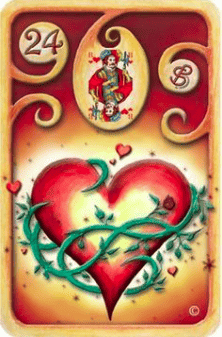
Heart: Represents love, passion and emotion.
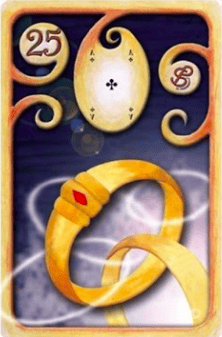
Alliance: Represents commitment, union and partnership.
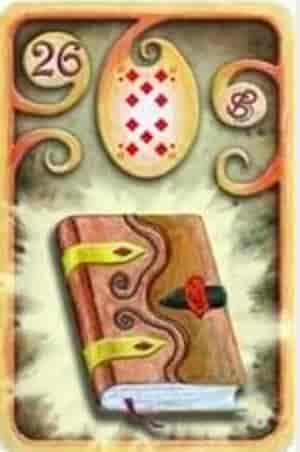
Book: Represents knowledge, learning and discovery.
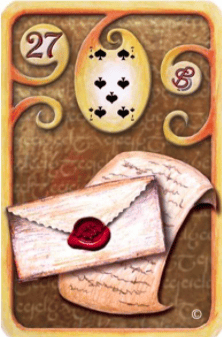
Letter: Represents news, messages and communication.
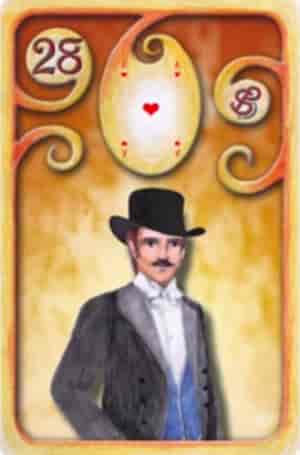
Man: Represents a mature, influential and powerful man.
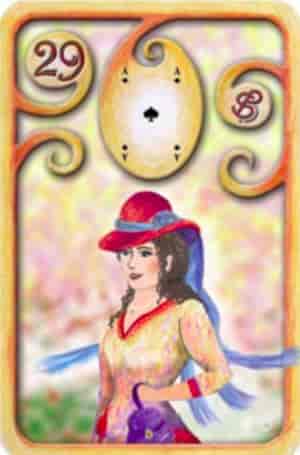
Woman: Represents a mature, influential and powerful woman.
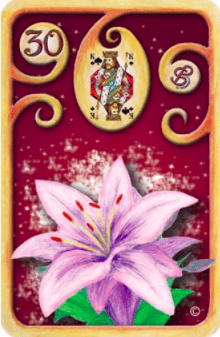
Lilies: Represents purity, clarity and peace.

Sun: Represents success, light and heat.

Moon: Represents emotion, intuition and mystery.
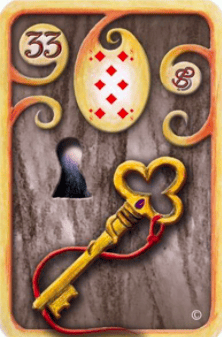
Key: Represents solution, openness and resolution.
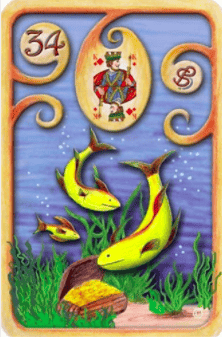
Pisces: Represents money, wealth and abundance.
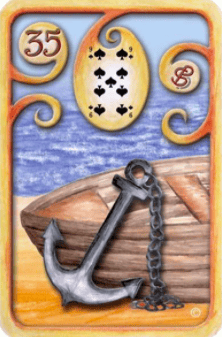
Anchor: Represents stability, security and trust.
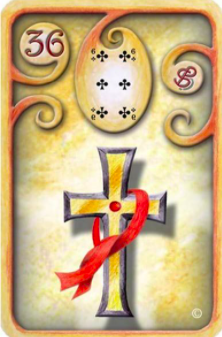
Cross: Represents sacrifice, ordeal and spiritual challenges.
- Knight: Represents movement, change and travel.
- Clover: Represents luck, opportunity and success.
- Ship: Represents travel, trade, and change.
- Home: Represents security, family and stability.
- Tree: Represents health, growth and evolution.
- Clouds: Represents confusion, uncertainty and doubt.
- Serpent: Represents betrayal, deceit and manipulation.
- Coffin: Represents the end, termination, transformation and rebirth.
- Bouquet: Represents joy, celebration and love.
- Scythe: Represents change, decision and completion.
- Whip: Represents conflict, struggle and challenge.
- Birds: Represents conversations, dialogue and communication.
- Child: Represents innocence, purity and new beginnings.
- Fox: Represents cunning, intelligence and trickery.
- Bear: Represents strength, power and money.
- Stars: Represents hope, inspiration and enlightenment.
- Stork: Represents significant changes and transformations.
- Dog: Represents friendship, loyalty and protection.
- Tower: Represents isolation, solitude and structure.
- Garden: Represents socializing, partying and fun.
- Mountain: Represents obstacles, challenges and overcoming.
- Paths: Represents choices, decisions, and options.
- Rats: Represents loss, theft and disorder.
- Heart: Represents love, passion and emotion.
- Alliance: Represents commitment, union and partnership.
- Book: Represents knowledge, learning and discovery.
- Letter: Represents news, messages and communication.
- Man: Represents a mature, influential and powerful man.
- Woman: Represents a mature, influential and powerful woman.
- Lilies: Represents purity, clarity and peace.
- Sun: Represents success, light and heat.
- Moon: Represents emotion, intuition and mystery.
- Key: Represents solution, openness and resolution.
- Pisces: Represents money, wealth and abundance.
- Anchor: Represents stability, security and trust.
- Cross: Represents sacrifice, ordeal and spiritual challenges.
Lenormand Playing Card Associations
These are clubs that are not exclusively engaged in learning the art of paper magic but can greatly raise the level of beginner card lovers by adding unique interpretations to their readings. The combination of numerology with the suits can reveal new interpretations of the “reading” of the cards. Of course, explanations can vary from culture to culture.
In its standard version, the Lenormand system consists of 36 cards, in its full version 52 cards, while the Tarot system contains 78 cards.
Below is a list of the basic interpretations of the symbols depicted on Lenormand Cards.
- Spades: Thoughts, Planning, Mental fortitude, Communication, Wind energy
- Hearts: Emotion, Feelings, Intuition, Relationships, Water energy
- Clovers/Clubs: Material, Physical, Home, Money, Family, Earth energy
- Diamonds: Inspiration, Energy, Creativity, Action, Fire energy
